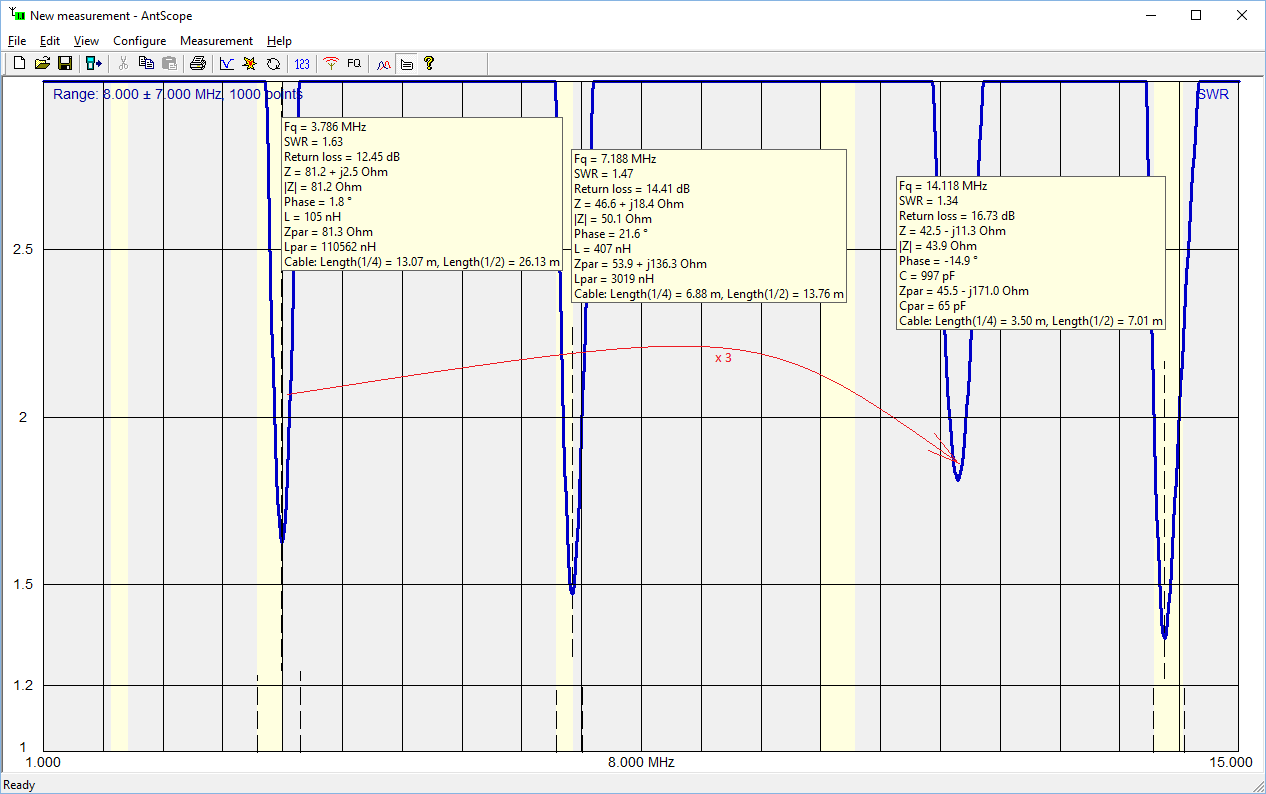
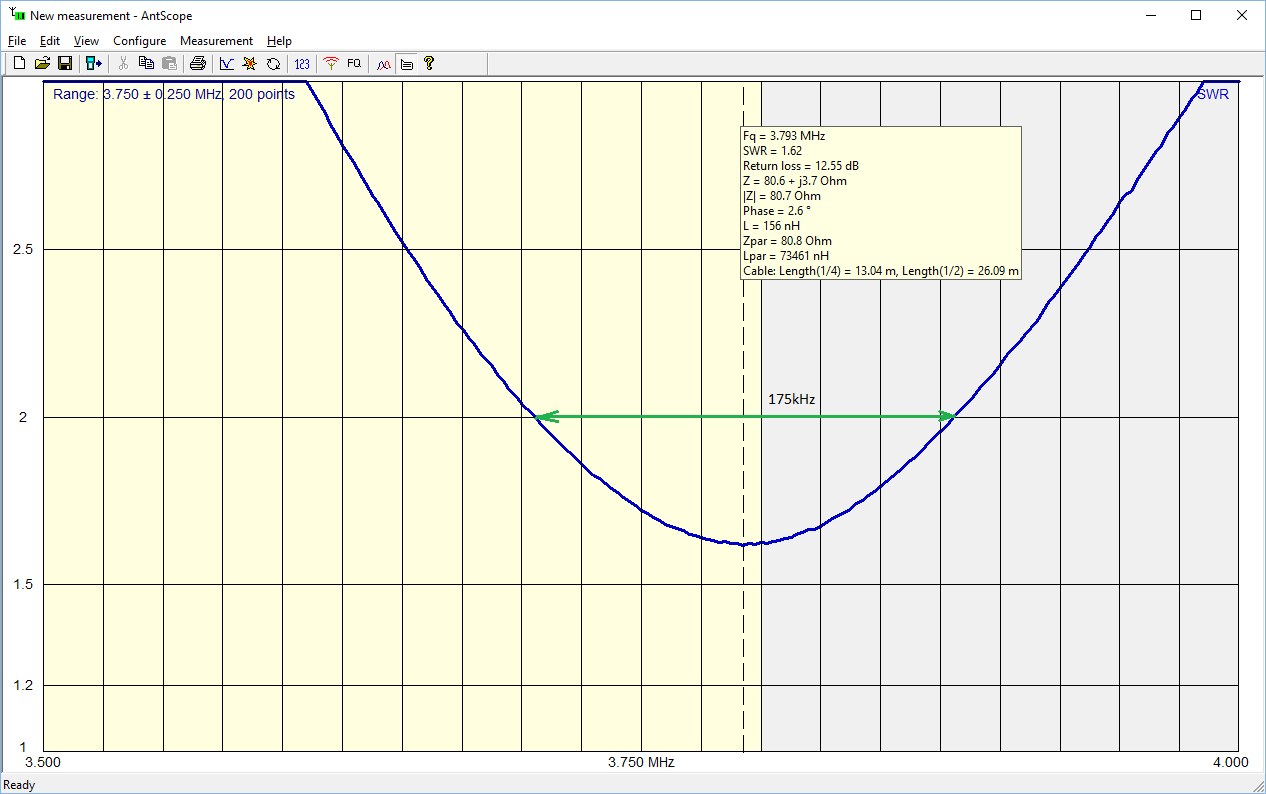
These are SWR charts: overall for three bands, and separate for 80 m band.
 |
 |
SWR for 40 and 20 m bands
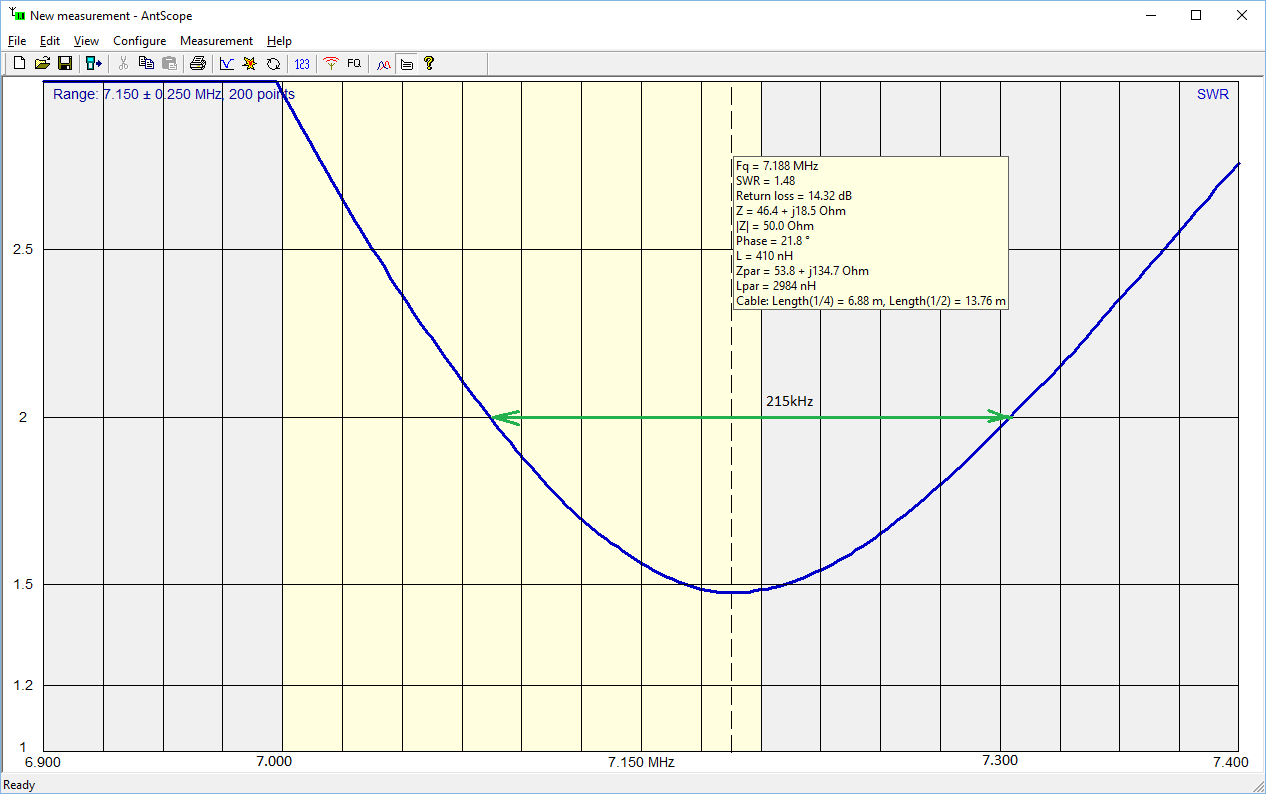 |
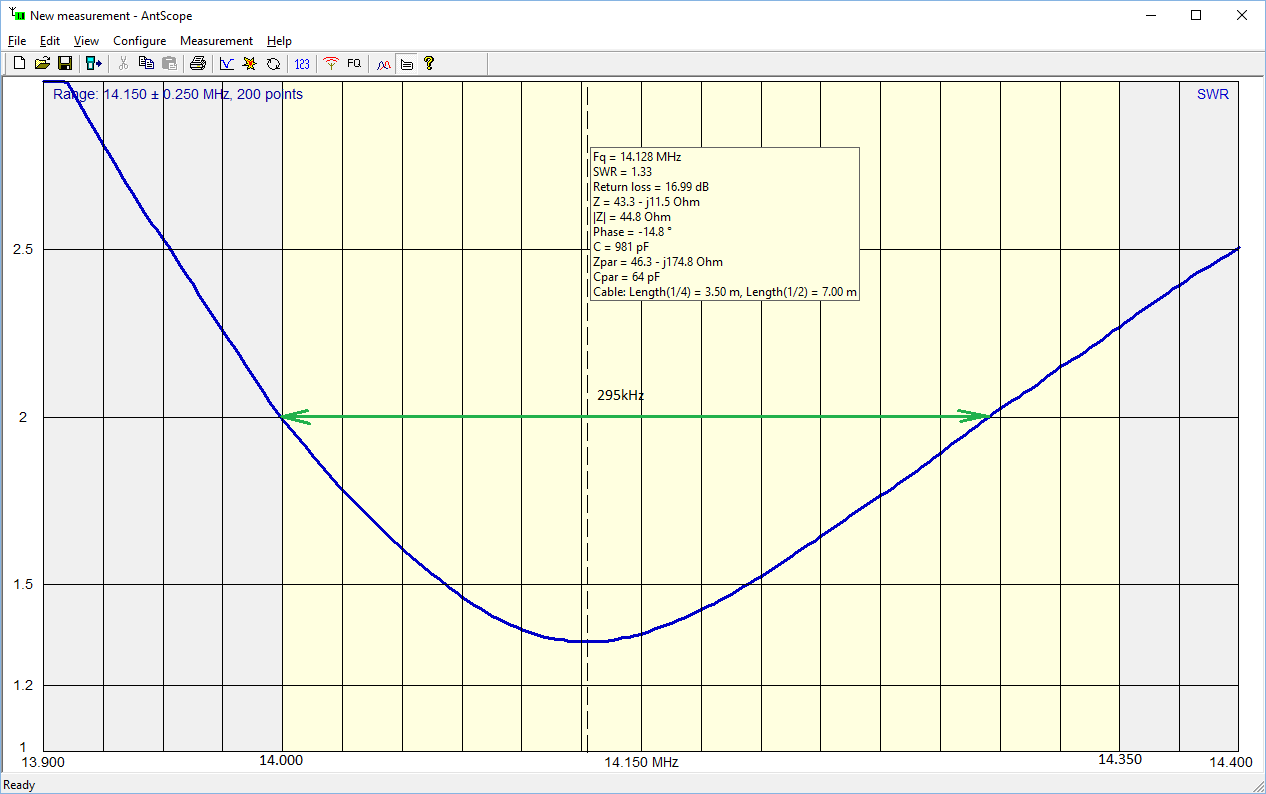 |
|
|
|
|
|
|
Historical information about the five-band fan dipole:
It was interesting to tune the five-band fan dipole. Top 10 and 6 meters bands were operational on this antenna, as confirmed with local club members. Although during a year, not much activity was happening on those two bands. And also much more efficient directional antennas are available for 10 and 6 meters. So it was decided to cut off those wires, to make the central part lighter, and also lift it much higher with the central rope. U-type of dipole has been changed to Inverted-V Fan Dipole, which was supposed to make better coverage of areas along the dipole axis.
Final dimensions of the former 5-band dipole. Risers are those pigtail pieces of wire, connecting the wing with balun (they are included in the total length).
Band |
total length for 5-band antenna, in cm |
left wing |
left riser |
right riser |
right wing |
80 m |
3788 |
1820 |
73 |
77 |
1818 |
40 m |
1970 |
960 |
28 |
33 |
949 |
| 20 m | 1041 |
473 |
50 |
42 |
476 |
10 m |
526 |
236 |
27 |
36 |
227 |
6 m |
311 |
101 |
54 |
50 |
106 |
|
|
|
|
|
|
|
|
|
|
|
|
SWR for all bands and separate for 80 m:
 |
 |
SWR for 40 m and 20 m:
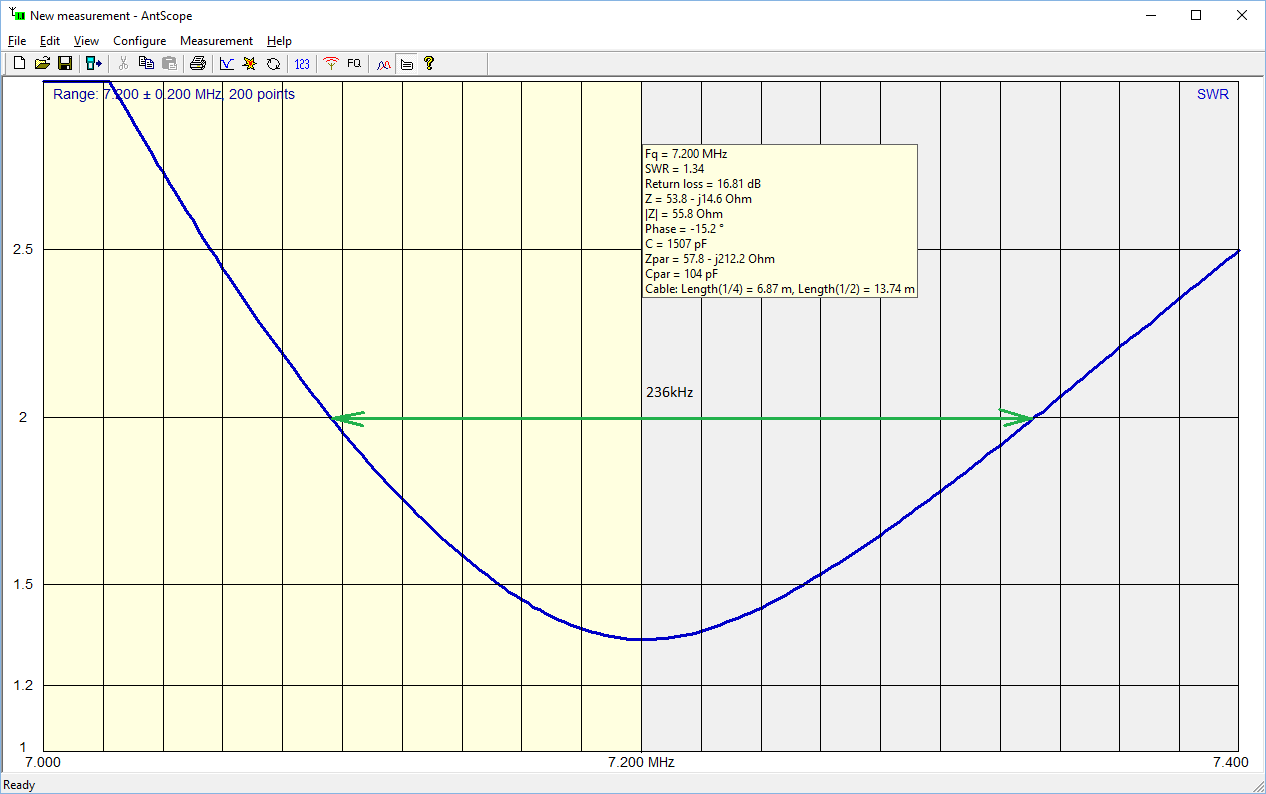 |
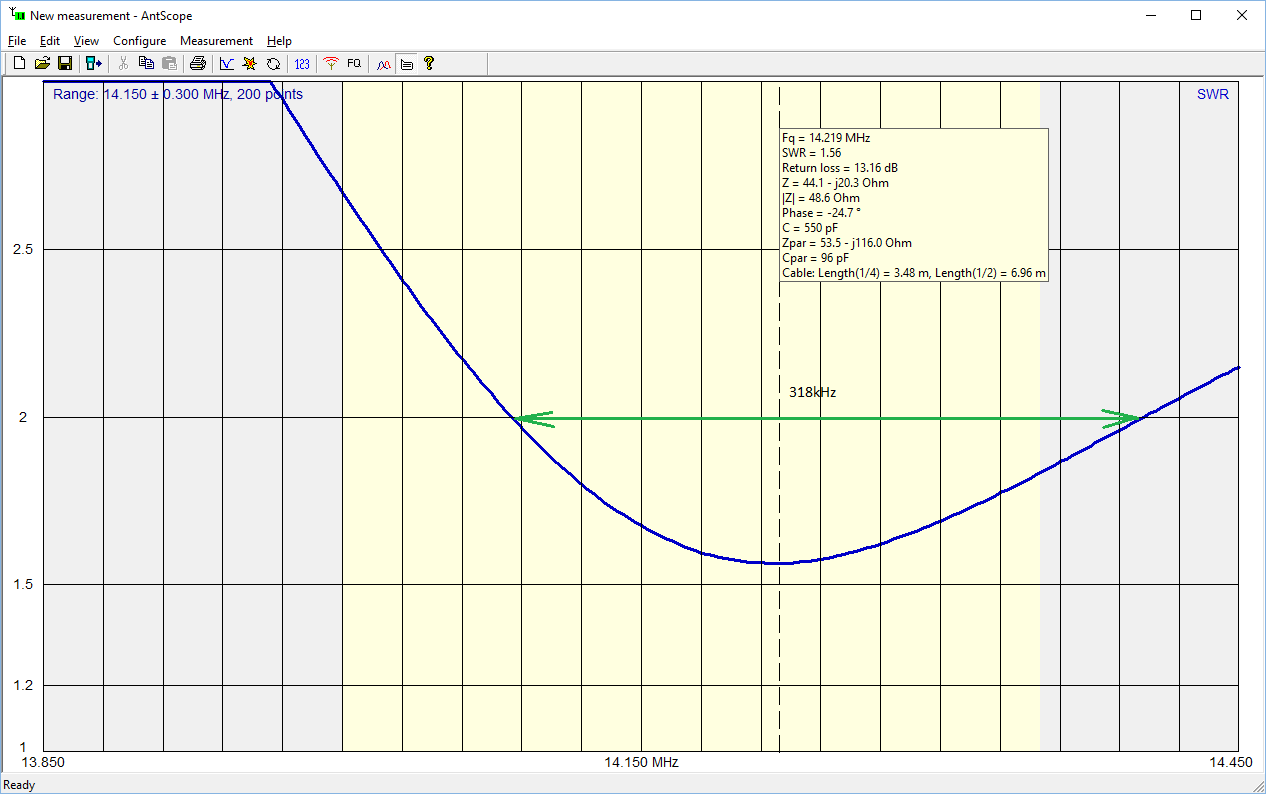 |
SWR for 10m and 6 m:
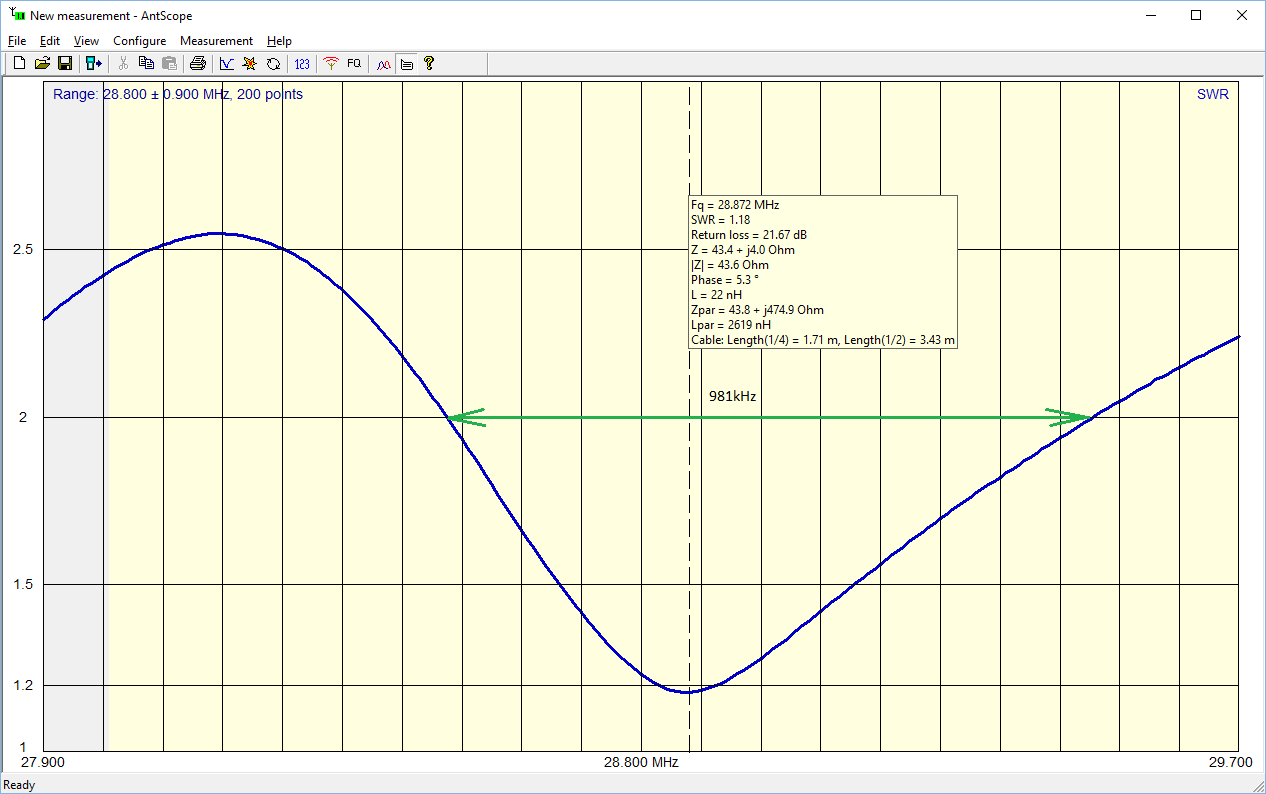 |
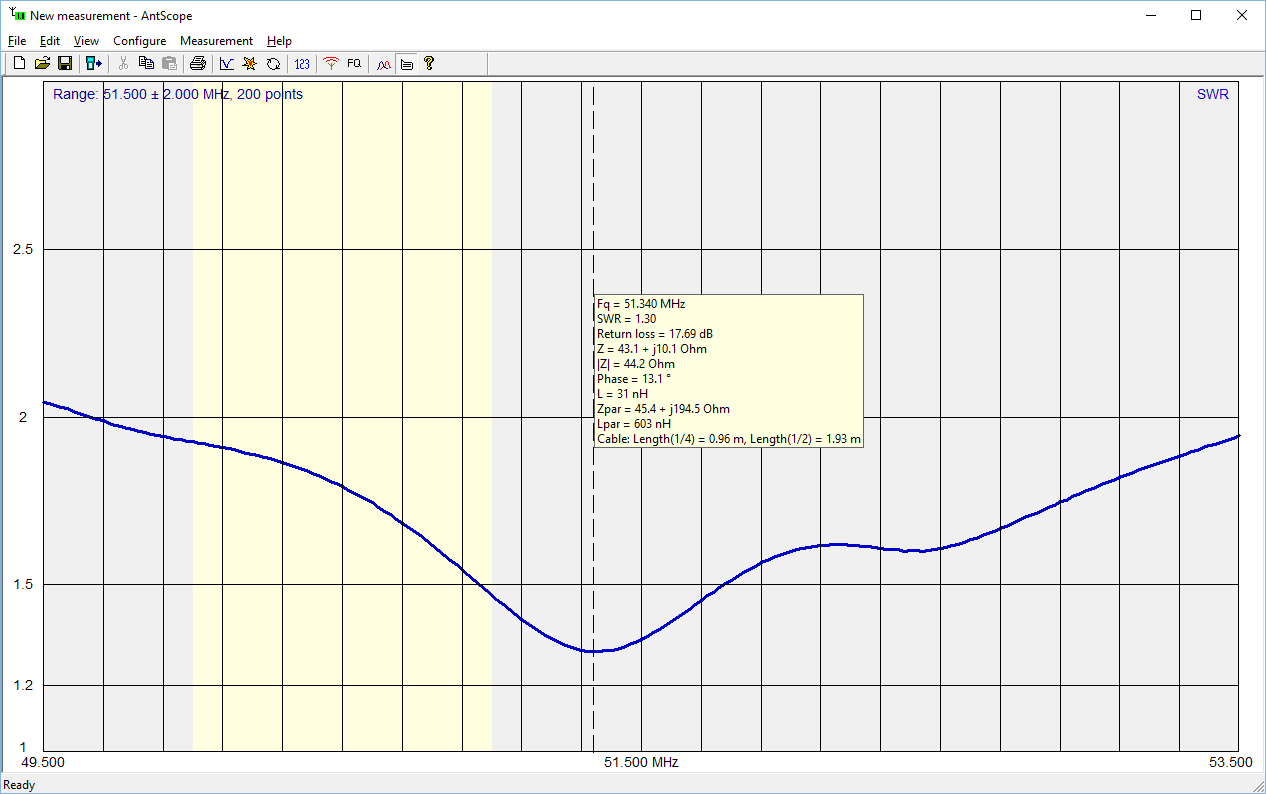 |
"Tri-band Inverted-V Fan Dipole" antenna proved to be the reliable most important part of the base station. With 100Wt Yaesu FT-991 and 500Wt Elecraft K3s it brings a lot of fun to work in competitions and everyday DXing and ragchewing.
As a future development, with the deployment of HexBeam for 20 m band and higher, maybe the central 20 m wire will be cut off from the dipole, leaving 80 and 40 meters only.
Few videos, demonstrating how harsh environment for this dipole could be:
Windstorms...